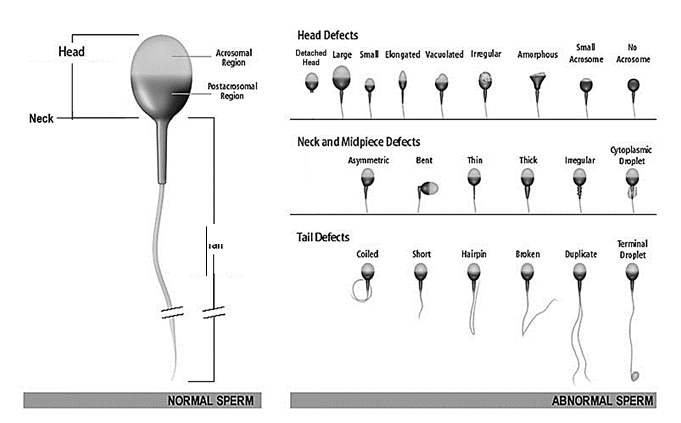

But the data are not clear-cut, and some fertility specialists are dubious. Some research has suggested that olfactory or hormone receptors in sperm cells may act like a GPS, guiding sperm toward the egg. Only the hardiest make it from start to finish. When babies are made the old-fashioned, unassisted way, sperm must navigate an Odyssean journey from cervix through uterus to fallopian tube, confronting fluctuations in temperature, acidity and viscosity along the way. Sometimes, Lo said, “You pick the least ugly of the sample you have.” It isn’t always possible to find sperm with this ideal physique in a given sample, Lo noted, and even homely, misshapen sperm can produce healthy babies. Though fertility specialists generally agree that an “ideal” human sperm has a smooth, olive-shaped head and a long, undulating tail, the degree to which the appearance of sperm cells correlates with their fertilizing potential is a subject of much controversy. Embryos are frozen and warmed at precise temperatures, hormones are measured to the billionth of a gram, and women inject themselves with strictly-calibrated doses of drugs.īut sperm selection remains more art than science. Slow pokes and non-swimmers are spurned as well.įertility treatments have gone so high-tech, it’s logical to assume there’s an exact formula for each procedure. He rejected a sperm with a thickened midpiece that he described as a “turtleneck,” and said he also avoids sperm with curlicue tails or an extra tail. “Not that one with the droopy head,” Lo said, pointing to a sperm that looked like a deflated balloon sagging over its string. Lo’s aim was to select the best possible sperm to fertilize the egg. Several thousand sperm wriggled in the petri dish before him, alongside a single human egg, retrieved earlier that day from a woman undergoing in vitro fertilization. Squinting into the eyepiece of a microscope, Jonathan Lo, an embryologist at the Yale Fertility Center, sized up the contenders. We look forward to helping you.This story was originally published on Jin NYT Parenting. Call our office today at (704) 786-5131 to schedule your appointment, or fill out our online appointment request form.

Richard Natale at Carolina Urology Partners in Concord, North Carolina for the compassionate and discreet urological care you deserve. Often, infertility problems can be addressed and just understanding what the issue is can be the first step in improving a couple’s ability to conceive.įor proper care, it’s vital to discuss any fertility issues you may have with a board-certified urologist. Contact Dr.

Ironically, stress itself can negatively contribute to a couple’s infertility due to its harmful impact on intimate relations – which is why it’s important to seek professional, expert advice early on. The Big Pictureīeginning a family is important for many couples, and infertility problems can cause a lot of worry and stress. Occasionally, certain medications can cause infertility problems. If all appears normal with a man’s sperm, further investigations may be conducted into possible issues with hormone balance, physical trauma to the genital area, and genetic issues. Too low of a sperm count, misshapen sperm, and “lazy” or less-active-than-normal sperm can all lead to fertility issues. Lumps in the testicles, or unusually small and hard testiclesīecause most causes of male infertility are related to sperm, the first test a urological health care provider will perform is a sperm count and analysis.Unusual loss of or reduction in the sense of smell.Signs of hormonal imbalance, such as loss of facial or body hair.Growth of breast tissue in men (gynecomastia).

Pain or discomfort in the testicles or area surrounding the testicles.Loss of libido or sexual desire / arousal.Trouble ejaculating – either no ejaculation or reduced volume of semen.Problems obtaining and maintaining an erection.While there may be no other obvious signs of infertility, there are a few warning flags to look out for. Technically, a man is considered infertile if he is unable to make a fertile woman pregnant after one year of unprotected intercourse with her. Often, men first suspect problems with infertility after failing to impregnate their partner. More than 10 percent of couples trying to conceive bump into fertility issues. Among couples who are having trouble starting a family, one-third of the time those troubles can be linked to male fertility issues, one-third to female fertility issues, and the final one-third to fertility issues with both partners. Infertility problems in men are more common than you might think.


 0 kommentar(er)
0 kommentar(er)
